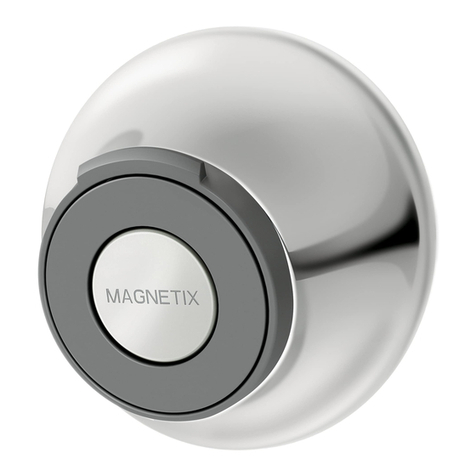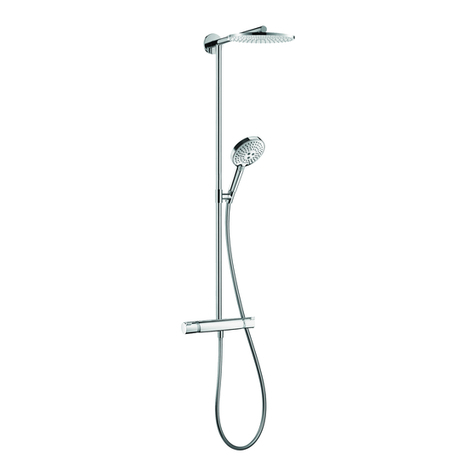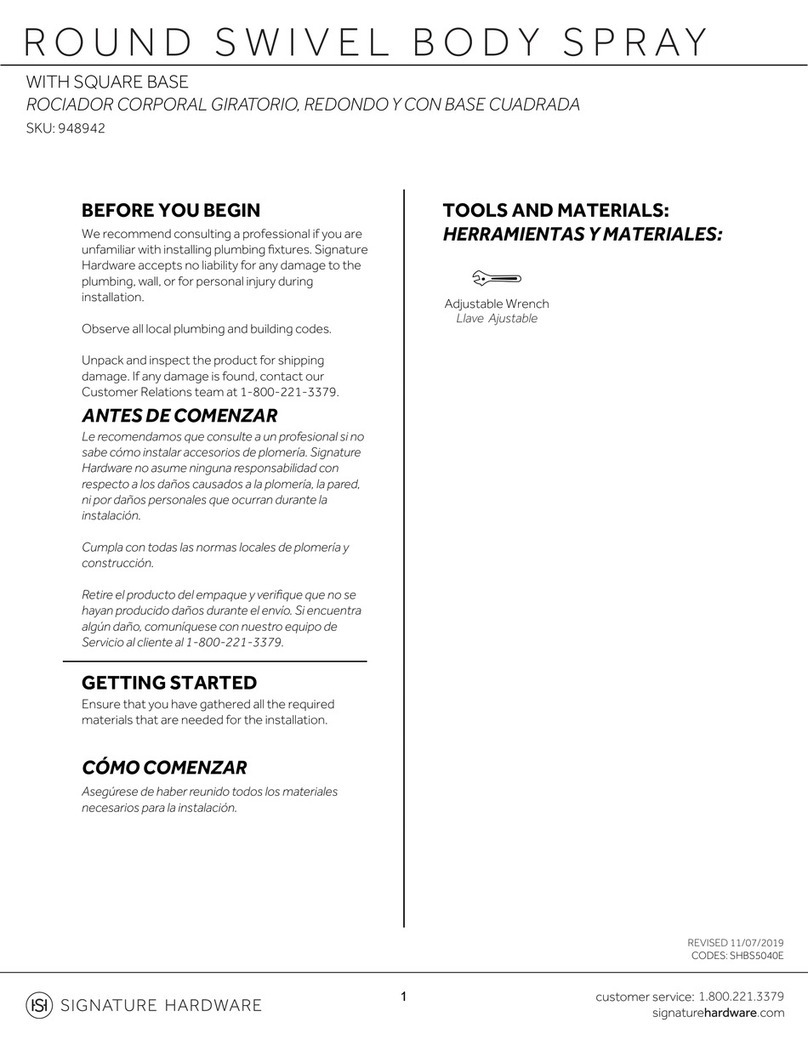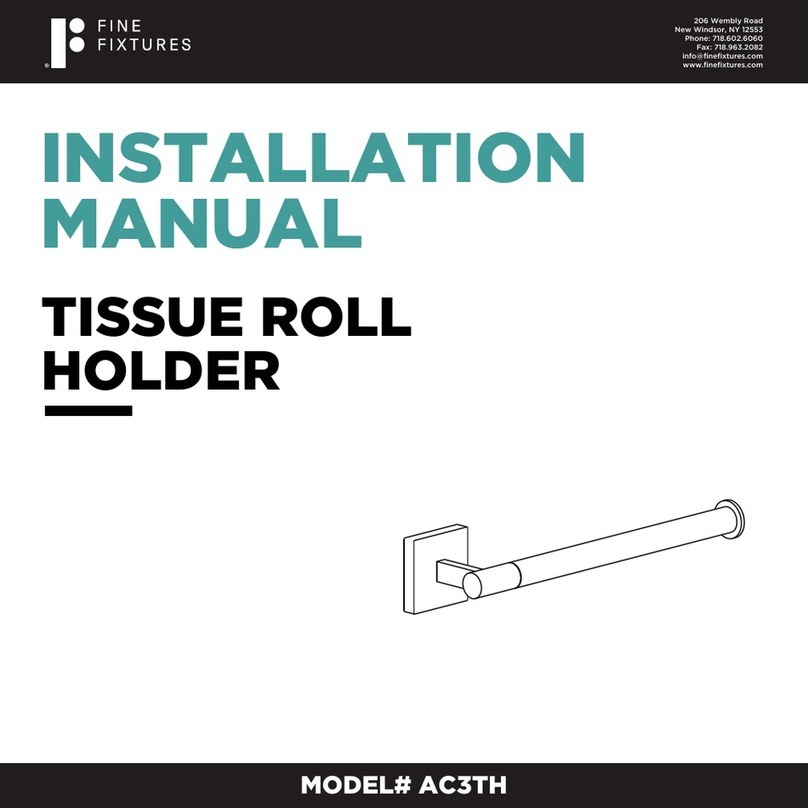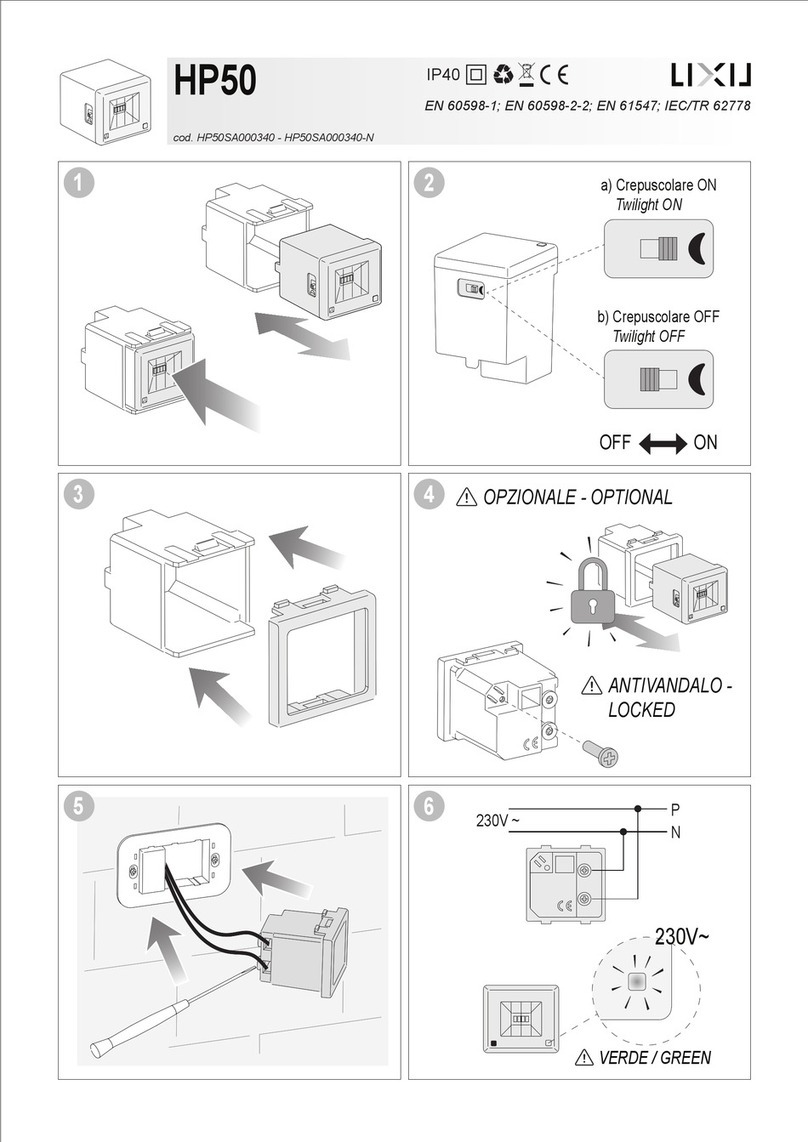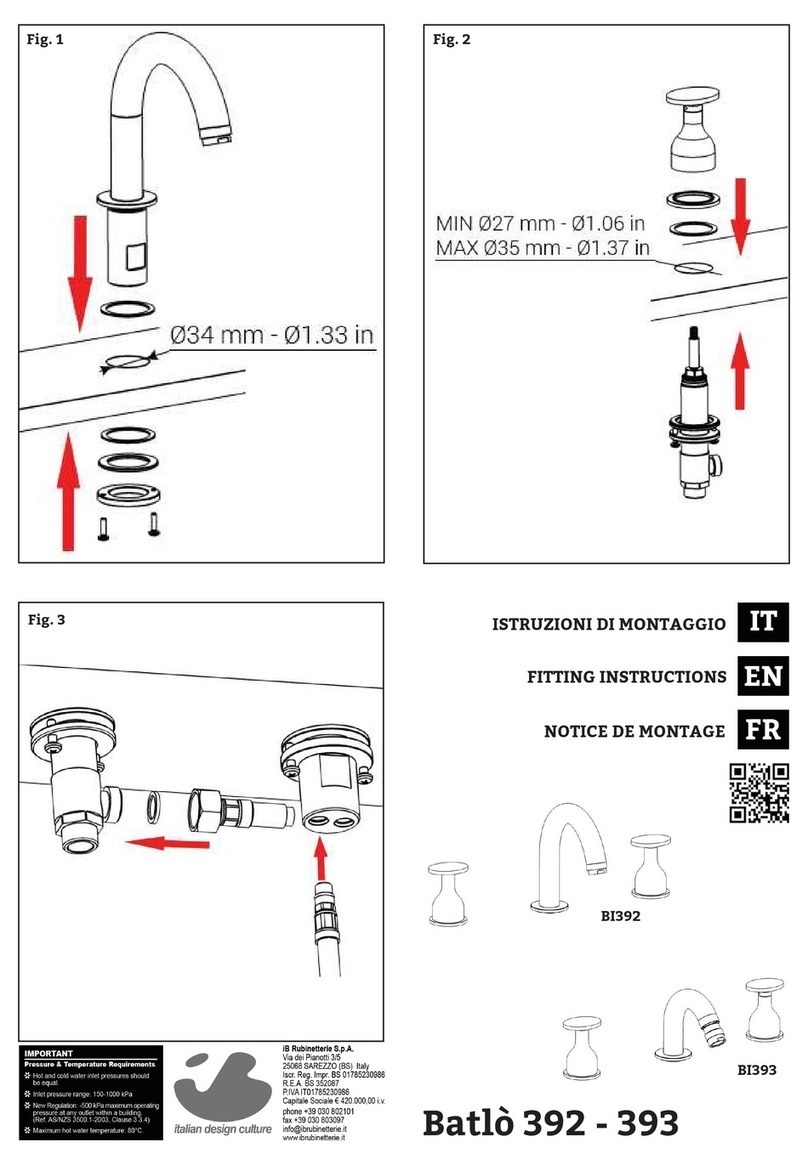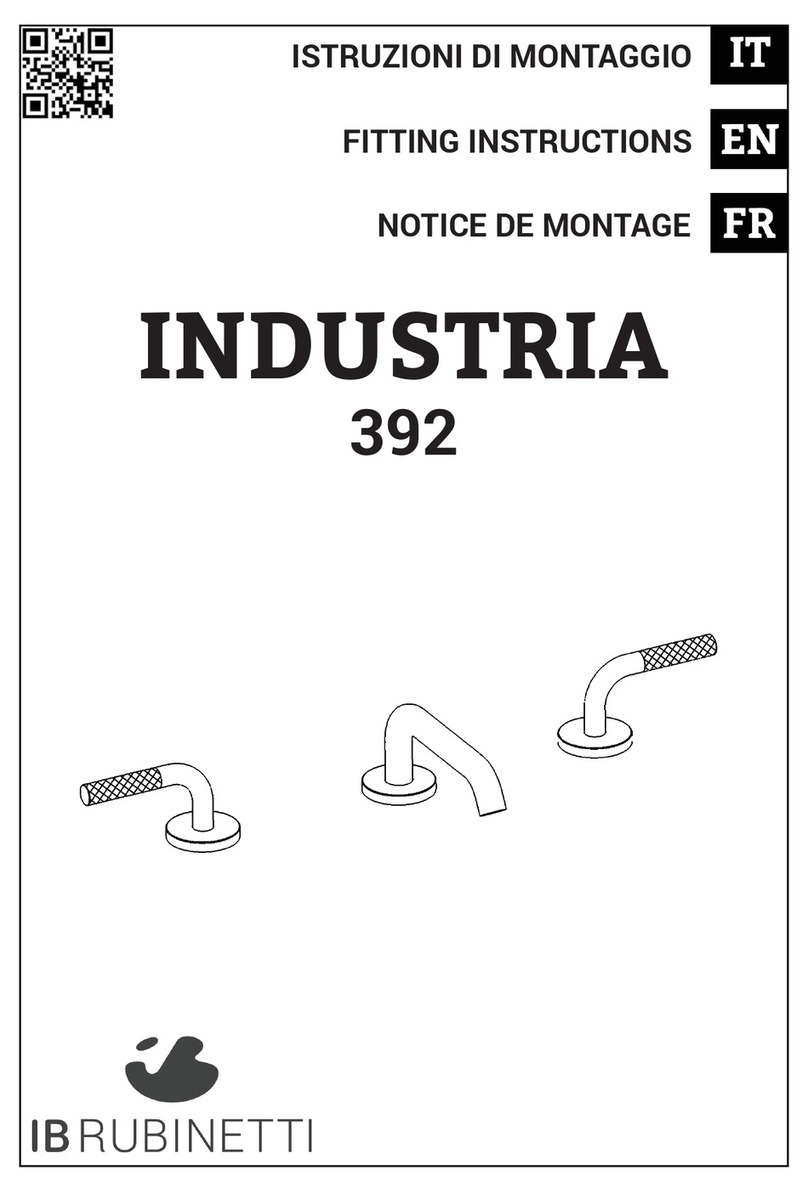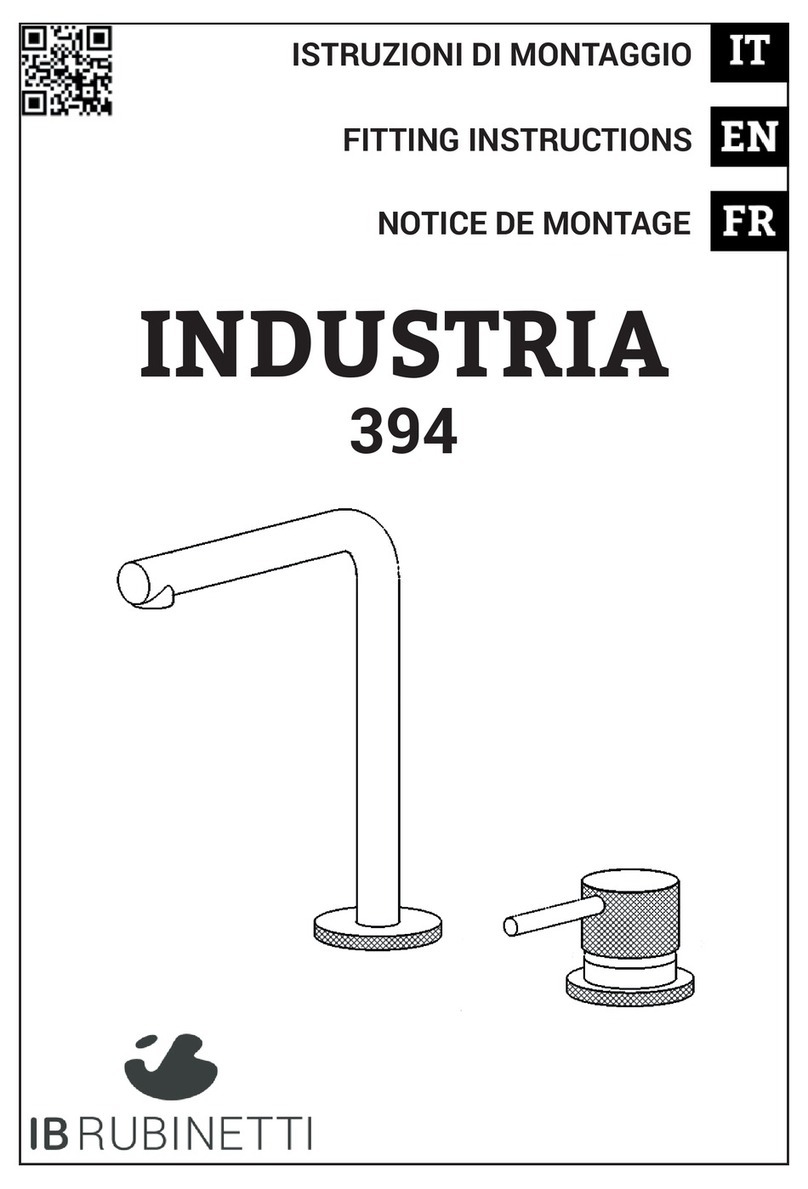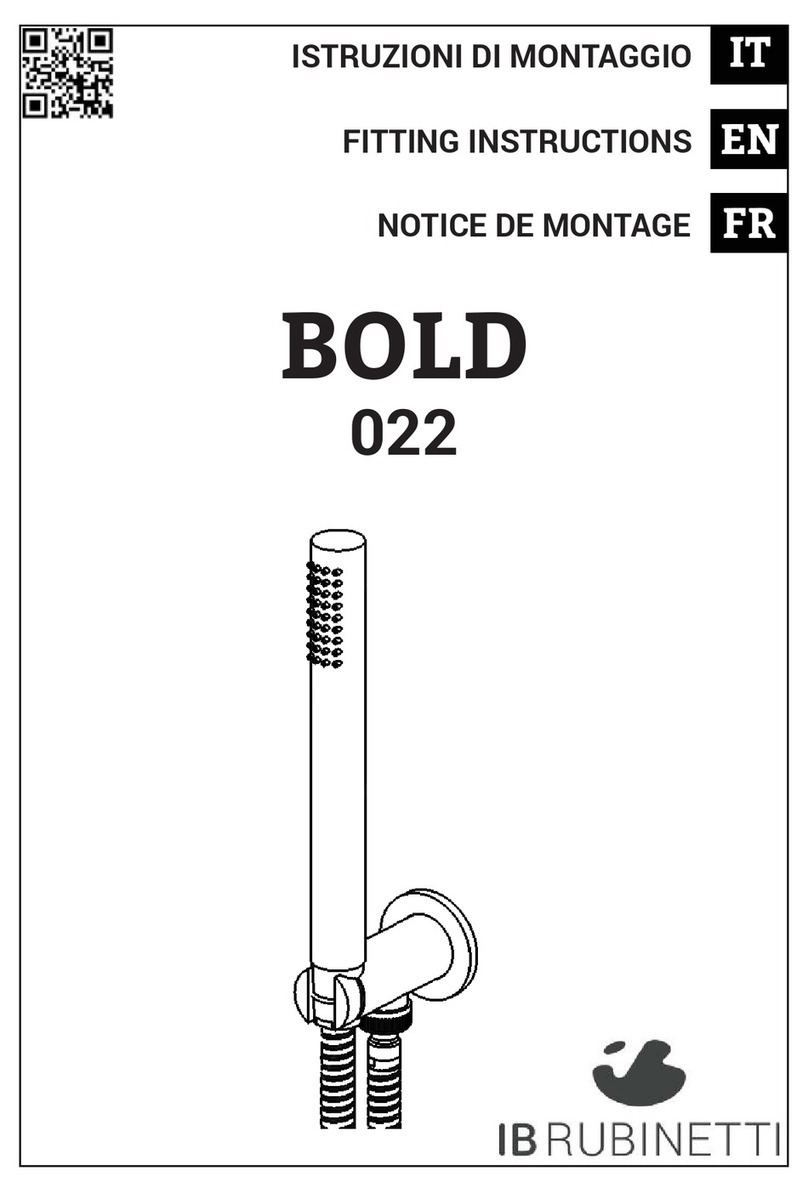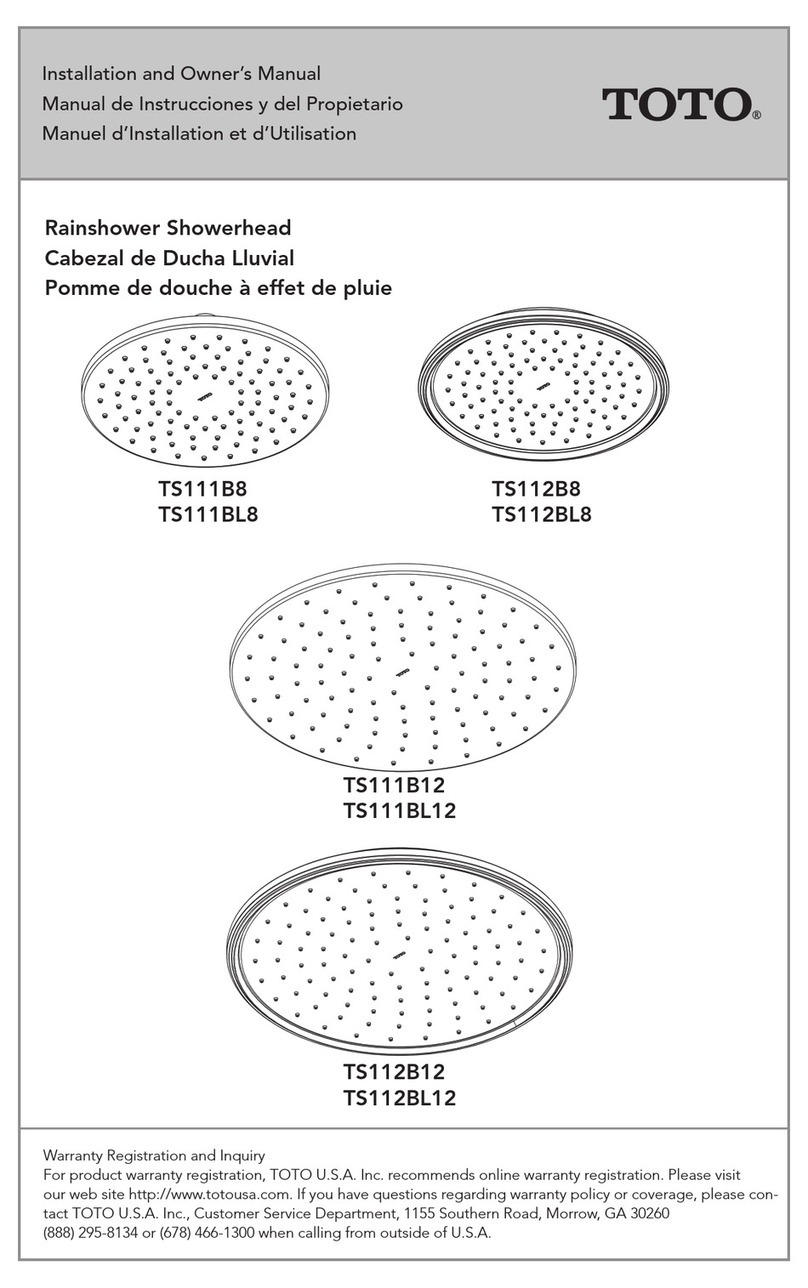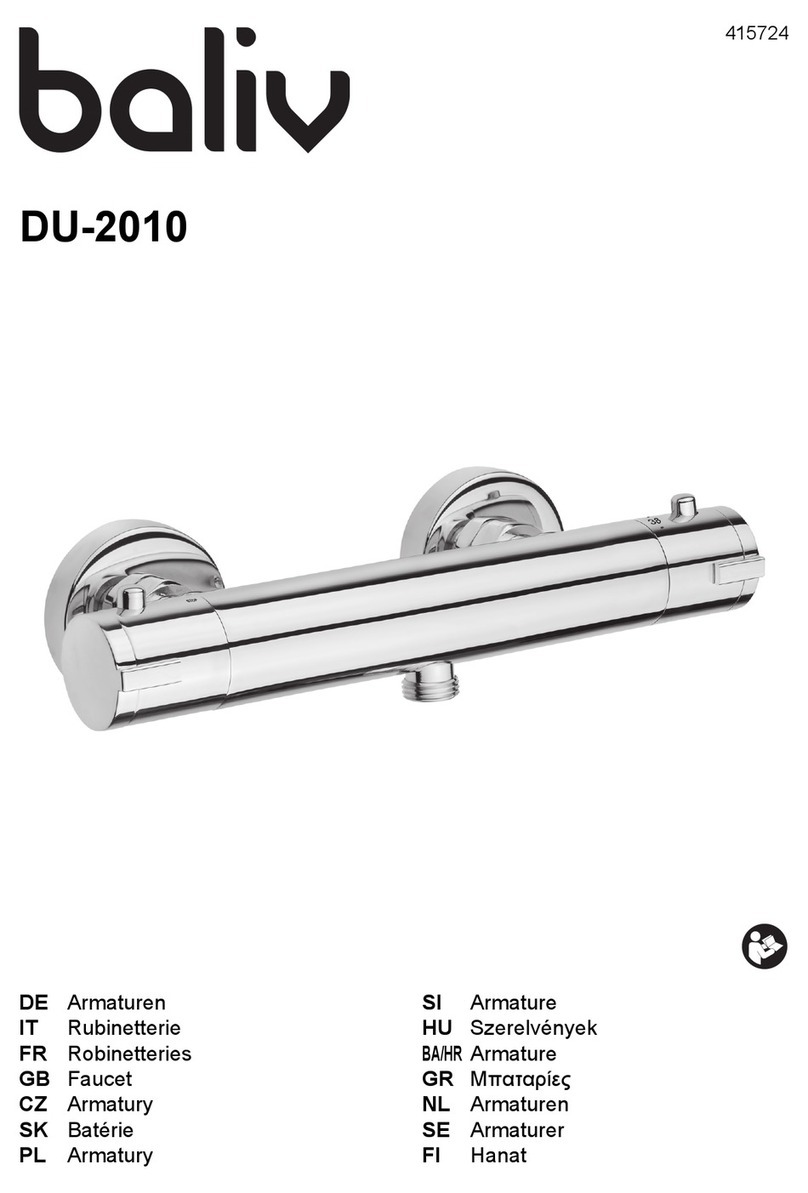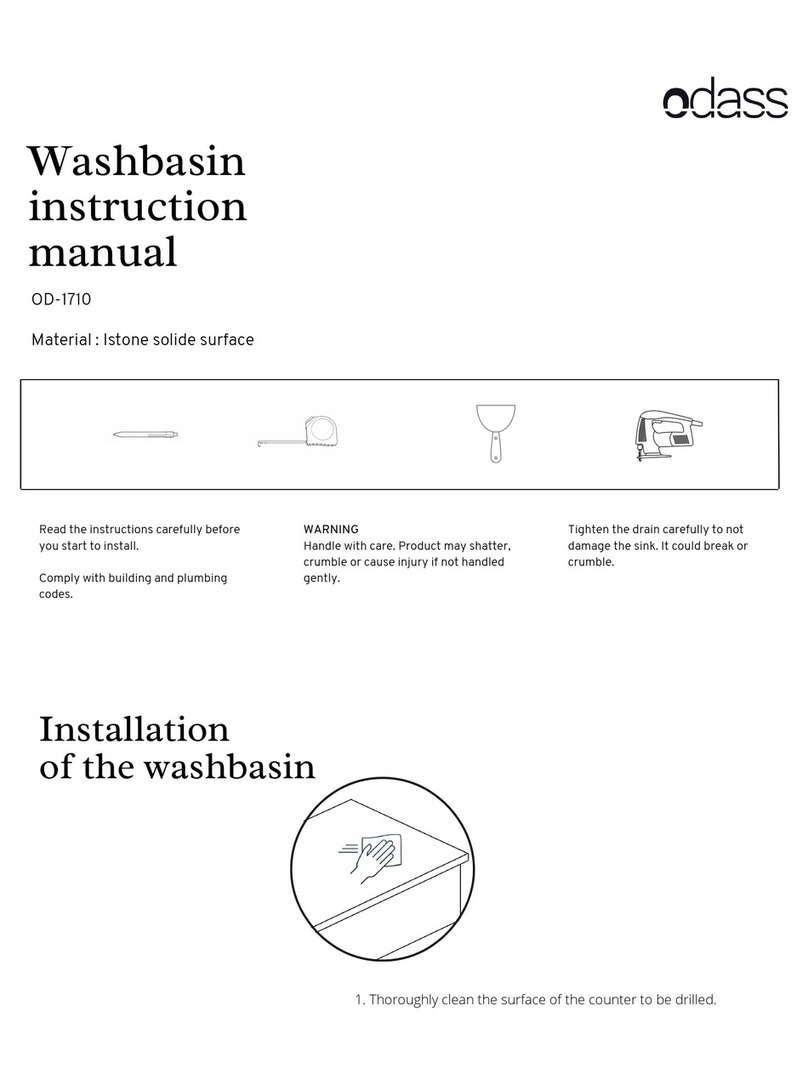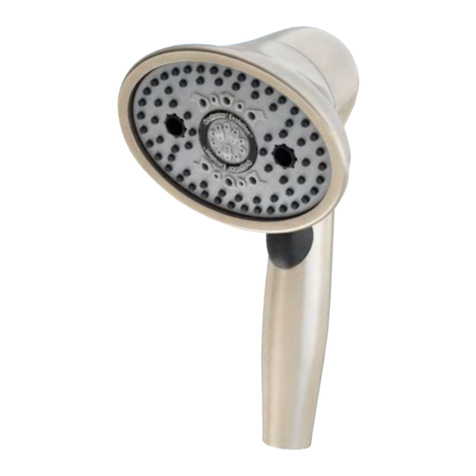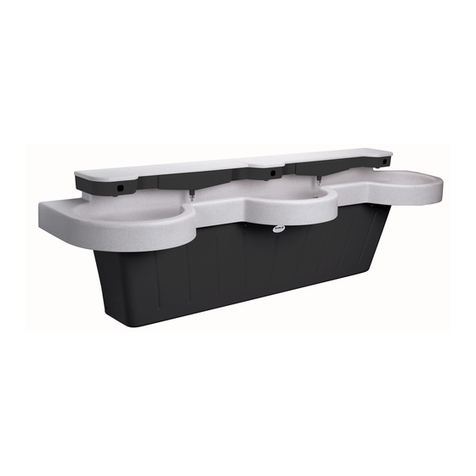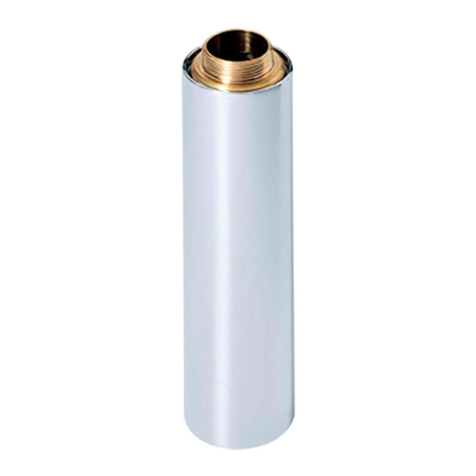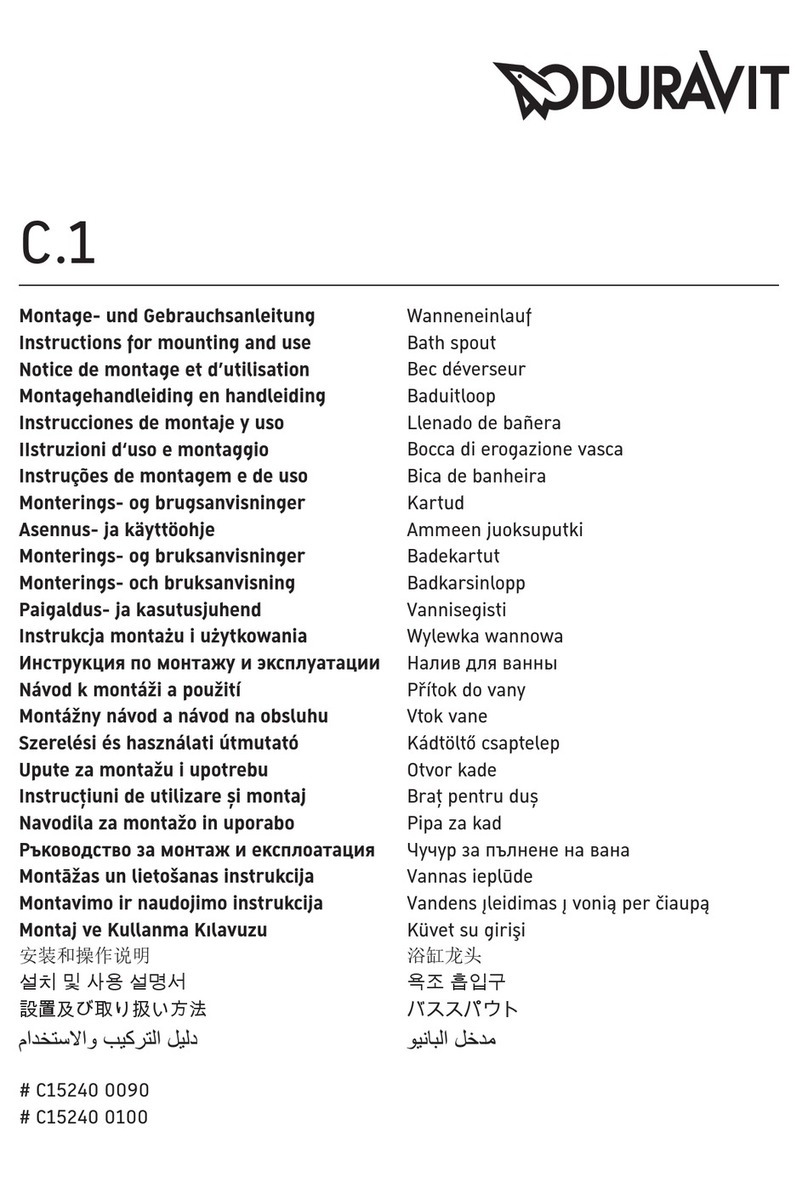PULIZIA
Diversi•care la pulizia delle parti cromate da quelle in marmo.
Essendo il marmo un materiale pregiato e delicato, consigliamo di coprirlo con un panno men-
tre si esegue la pulizia per le parti in metallo.
Parti in metallo cromato
Per una corretta pulizia, lavare esclusivamente con acqua e sapone, risciacquare ed asciugare
con una pelle di daino e panno morbido. Evitare assolutamente l’impiego di alcool, solventi,
detersivi solidi o liquidi contenenti sostanze corrosive o acide, stro•nacci con •bre sintetiche,
spugne abrasive, tamponi con •li metallici, poichè potrebbero alterare irreversibilmente le su-
per•ci trattate.
Parti in marmo.
Per la pulizia del marmo utilizzare acqua con una bassa concentrazione di alcool. Oppure utiliz-
zare saponi con PH neutro. Evitare tutte le sostanze acide. Non utilizzare succo di limone, aci-
do citrico, aceto di vino, aceto di mele, detergenti aggressivi e altre soluzioni che risultino acide
o corrosive. EVITARE ASSOLUTAMETE QUALSIASI CONTATTO CON PRODOTTI ANTICALCARE!
Essendo il marmo una roccia calcarea, viene corrosa da tutti gli anticalcare. Evitare i prodotti
abrasivi e tutti gli strumenti che potrebbero gra!are il marmo e rovinarlo in modo irreparabile.
L’UTILIZZO DI QUESTO TIPO DI DETERGENTI PER LA PULIZIA DEL RUBINETTO FA DECADERE
QUALSIASI GARANZIA SULLA SUPERFICIE DELLO STESSO DA PARTE DI IB.
CLEANING
Diversify the cleaning of the chromed parts from the marble ones.
Due to the fact that marble is precious and fragile, we suggest to cover it up with a towel during
the cleaning process of the metallic parts.
Chromed metallic parts
In order to obtain a correct cleanliness, exclusively wash them with soap and water, rewash and
dry them with a soft towel and deerskin. Avoid the usage of alcohol, solvents, solid or liquid
detergents which contain corrosive or acidic substances, abrasive sponges, swab with metallic
strings because they could irreversibly compromise the surfaces.
Marble parts
Use water with a low alcohol concentration to clean the marble parts, otherwise use a soap
with a neutral PH. Avoid the usage of all the acidic substances. Do not use lemon juice, citric
acid, wine vinegar, apple vinegar, aggressive detergents and other solutions which may result
acidic or corrosive. DON’T LET THE MARBLE PARTS GET IN TOUCH WITH ANTI-LIMESCALE
PRODUCTS due to the fact that marble is a calcareous rock and it would be corroded. Avoid
abrasive products and all the things that could scratch the marble and wreck it irreversibly.
THE USAGE OF THIS KIND OF DETERGNETS DURING THE CLEANING OF THE MIXER EXCLUDE
IB RUBINETTERIE FROM ANY WARRANTY OBLIGATION.

